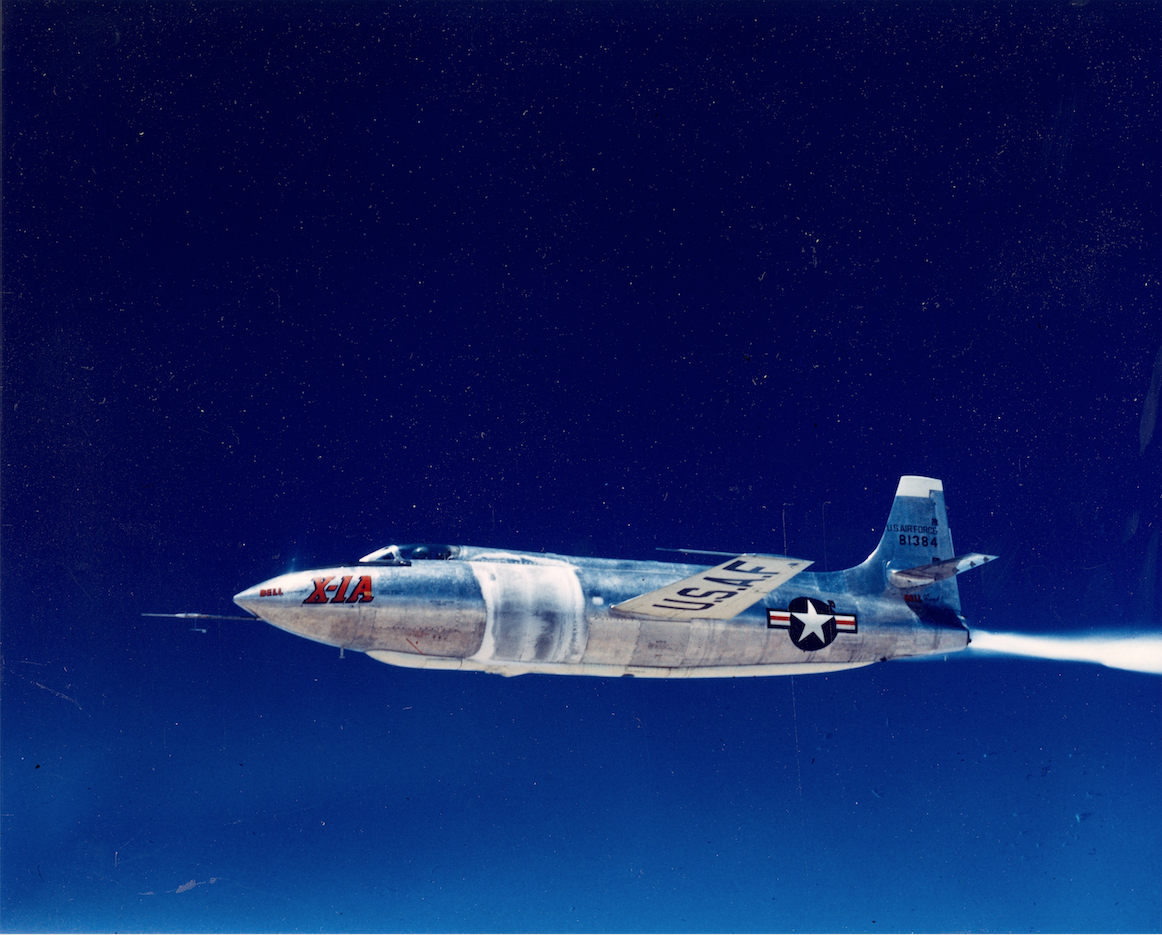
12 December 1953: On its tenth flight, U.S. Air Force test pilot Major Chuck Yeager flew the Bell X-1A rocket plane to Mach 2.435 (1,618 miles per hour/2,604 kilometers per hour) at 74,700 feet (22,769 meters), faster than anyone had flown before.
After the rocket engine was shut down, the X-1A tumbled out of control—”divergent in three axes” in test pilot speak—and fell out of the sky. It dropped nearly 50,000 feet (15,240 meters) in 70 seconds. Yeager was exposed to accelerations of +8 to -1.5 g’s. The motion was so violent that Yeager cracked the rocketplane’s canopy with his flight helmet.
Yeager was finally able to recover by 30,000 feet (9,144 meters) and landed safely at Edwards Air Force Base.
Yeager later remarked that if the X-1A had an ejection seat he would have used it.
Bell Aircraft Corporation engineers had warned Yeager not to exceed Mach 2.3.
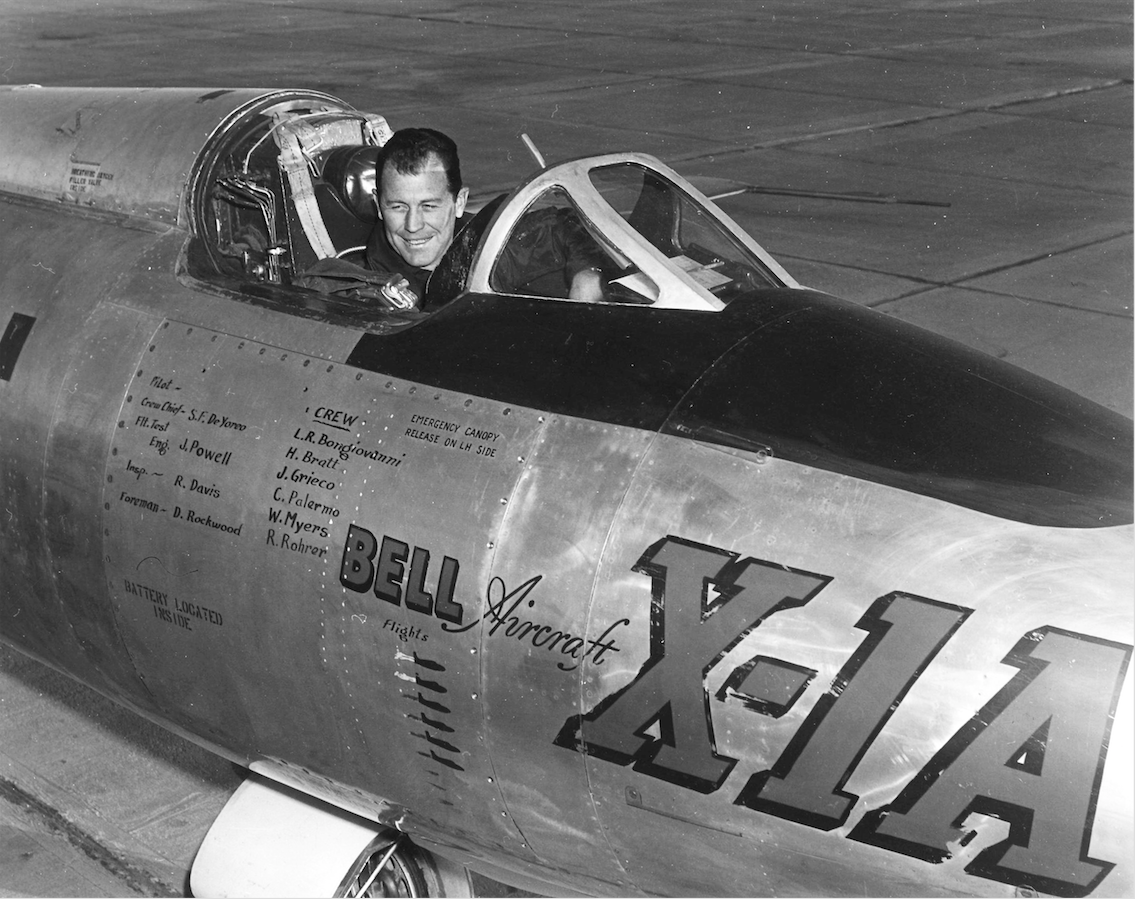
The following is from Major Charles E. Yeager’s official post-flight report:
After a normal drop at 31,000 feet, chambers #4, #2, and #1 were ignited and [the] airplane was accelerated up to .8 Mach number. A flight path was formed holding .8 Mach number up to 43,000 feet where chamber #3 was ignited and the airplane accelerated in level flight to 1.1 Mach number. A climb was again started passing through 50,000 feet at 1.1 Mach number, 60,000 feet at 1.2 Mach number and a push-over was started at 62,000 feet. The top of the round-out occurred at 76,000 feet and 1.9 Mach number. The airplane was accelerated in level flight up to 2.4 [2.535 indicated] Mach number where all of the rocket chambers were cut. The flight path was very normal and nothing uneventful [sic] happened up to this point. After the engine was cut, the airplane went into a Dutch roll for approximately 2 oscillations and then started rolling to the right at a very rapid rate of roll. Full aileron and opposite rudder were applied with no effect on the rate of roll of the airplane. After approximately 8 to 10 complete rolls, the airplane stopped rolling in the inverted position and after approximately one-half of one second started rolling to the left at a rate in excess of 360 degrees per second, estimated by the pilot. At this point the pilot was completely disoriented and was not sure what maneuvers the airplane went through following the high rates of roll. Several very high ‘g’ loads both positive and negative and side loads were felt by the pilot. At one point during a negative ‘g’ load, the pilot felt the inner liner of the canopy break as the top of his pressure suit helmet came in contact with it. The first maneuver recognized by the pilot was an inverted spin at approximately 33,000 feet. The airplane then fell off into the normal spin from which the pilot recovered at 25,000 feet.
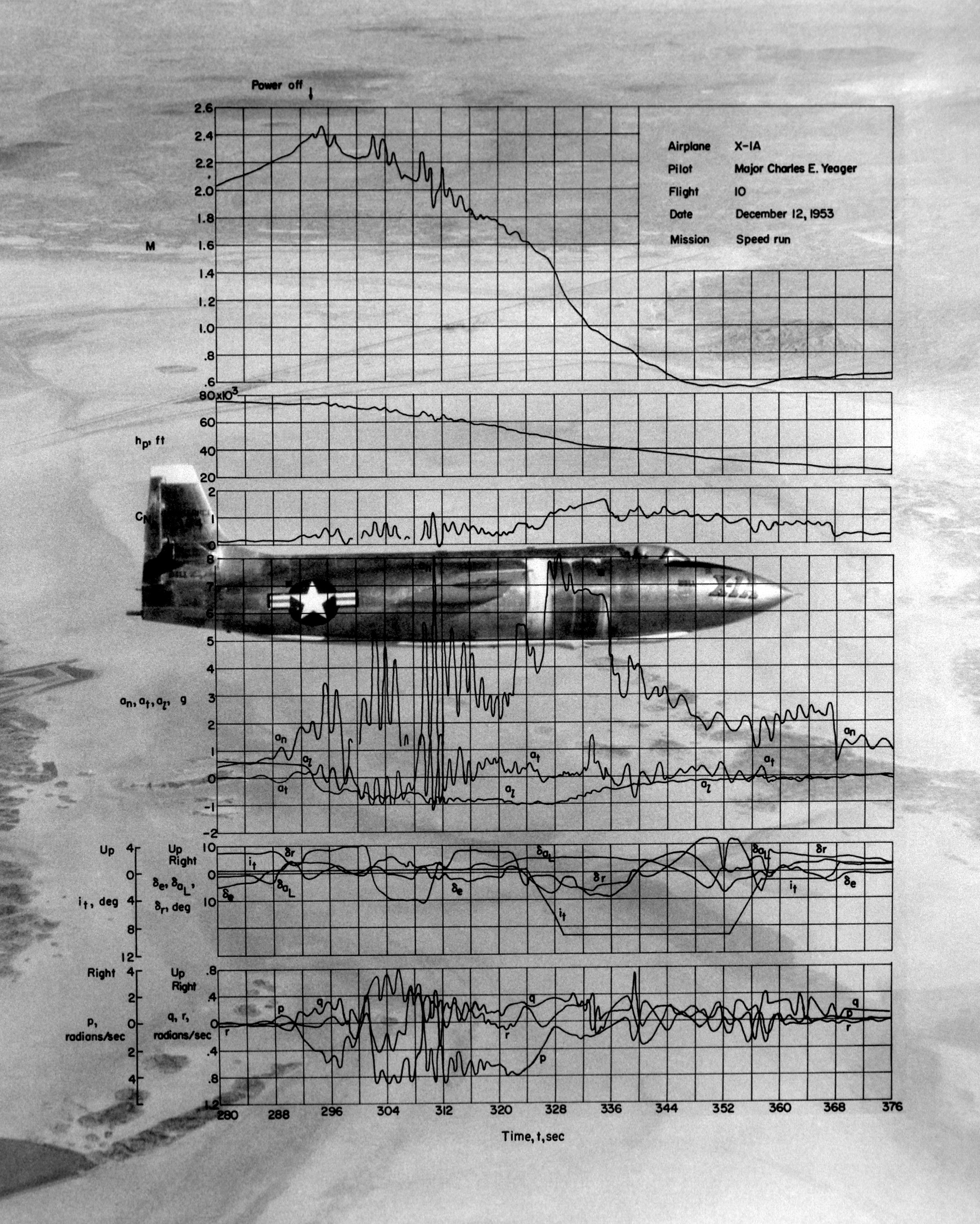
The following is a transcript of radio transmissions during the flight:
Yeager: Illegible [inaudible]—gasping—I’m down to 25,000 over Tehachapi. Don’t know
whether I can get back to the base or not.
Chase (Ridley): At 25,000 feet, Chuck?
Yeager: Can’t say much more, I got to (blurry—save myself).
Yeager: I’m—(illegible)—(Christ!)
Chase (Ridley): What say, Chuck?
Yeager: I say I don’t know if I tore anything up or not but Christ!
Chase (Murray): Tell us where you are if you can.
Yeager: I think I can get back to the base okay, Jack. Boy, I’m not going to do that any more.
Chase (Murray): Try to tell us where you are, Chuck.
Yeager: I’m (gasping)…I’ll tell you in a minute. I got 1800 lbs [nitrogen] source pressure.
Yeager: I don’t think you’ll have to run a structure demonstration on this damned thing!
Chase (Murray): Chuck from Murray, if you can give me altitude and heading, I’ll try to check you from outside.
Yeager: Be down at 18,000 feet. I’m about—I’ll be over the base at about 15,000 feet in a minute.
Chase (Murray): Yes, sir.
Yeager: Those guys were so right!
Yeager: Source pressure is still 15 seconds, I’m getting OK now.
Yeager: I got all the oscillograph data switches off. 4 fps camera off, it’s okay.
Bell Truck: Jettison and vent your tanks.
Yeager: I have already jettisoned. Now I’m venting both lox and fuel. Leaving hydrogen peroxide alone.
Bell Truck: Roger.
Yeager: I cut it, I got—in real bad trouble up there.
Yeager: Over the base right now, Kit, at 14,500 feet.
Chase (Murray): I have you.
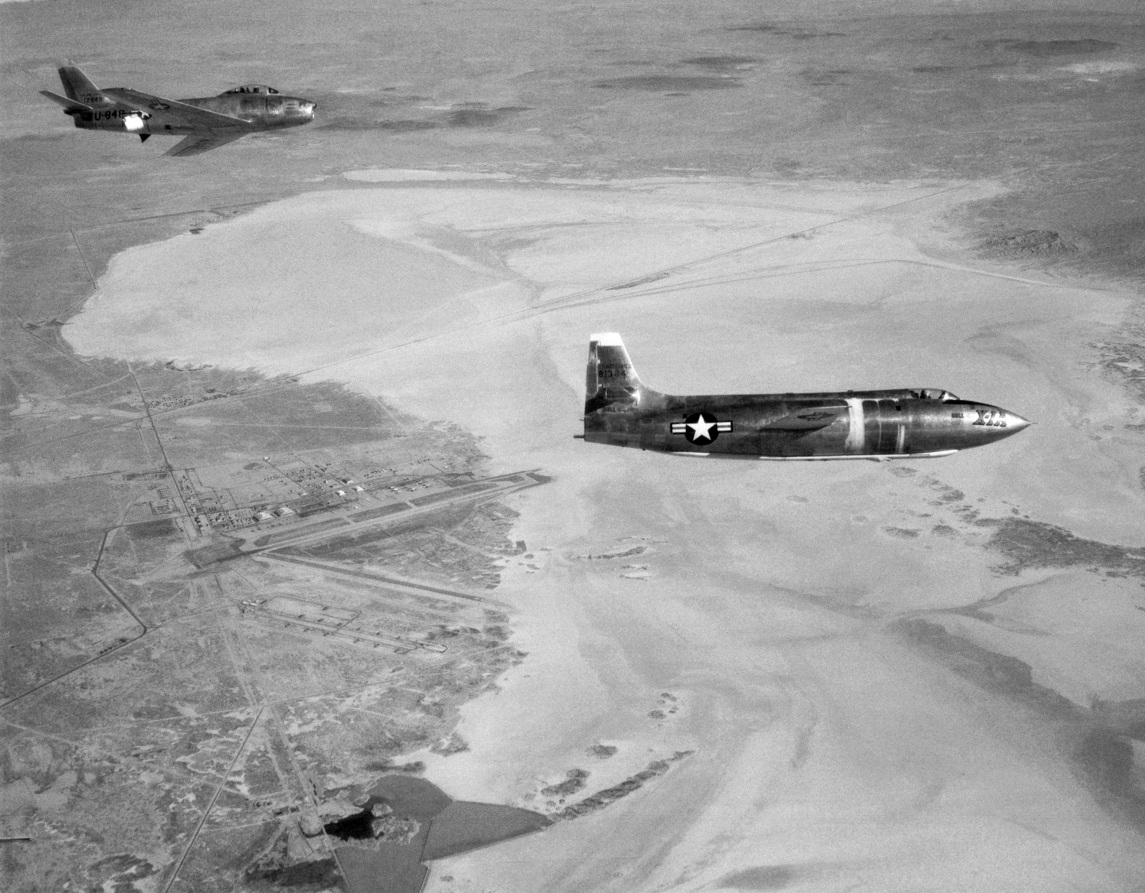
In his autobiography, Always Another Dawn, NACA test pilot Albert Scott Crossfield wrote:
Probably no other pilot could have come through that experience alive. Much later I asked Yeager, as a matter of professional interest, exactly how he regained control of the ship. He was vague in his reply, but he said he thought that after he reached the thick atmosphere, he had deliberately put the ship into a spin.
“A spin is something I know how to get out of,” he said. “That other business— the tumble—there is no way to figure that out.”
. . . Yeager received many accolades. I didn’t begrudge him one of them. If ever a pilot deserved praise for a job well done, it was Yeager. After that X-1A episode, he never flew a rocketplane again.
—Always Another Dawn: The Story of a Rocket Test Pilot, by A. Scott Crossfield with Clay Blair, Jr., The World Publishing Company, Cleveland and New York, Chapter 19 at Pages 183–184.
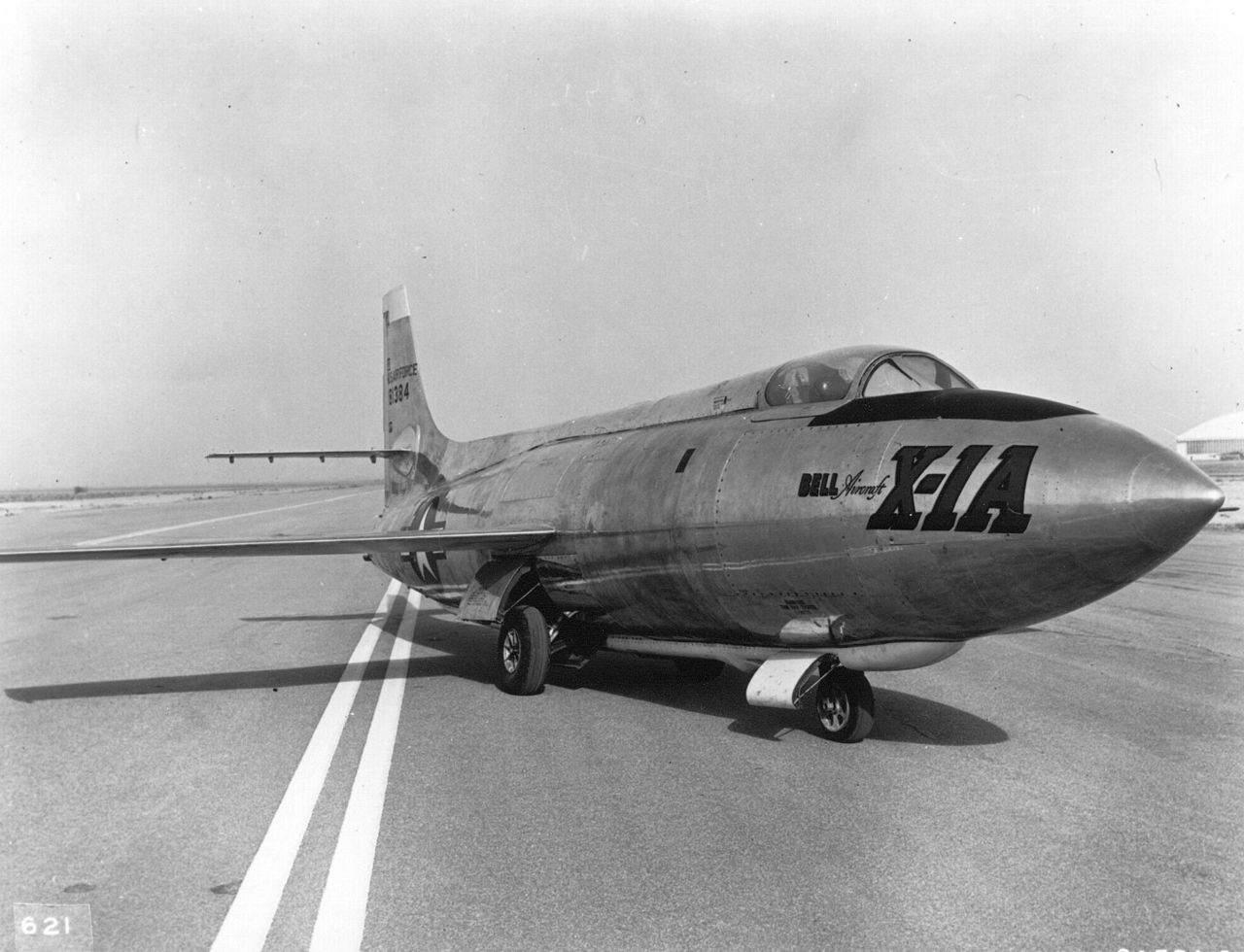
The Bell X-1A, 48-1384, was an experimental rocket-powered high-speed, high-altitude research aircraft. It was one of four second-generation X-1s (including the X-1B, X-1D and X-1E), specifically designed to investigate dynamic stability at speeds in excess of Mach 2 and altitudes greater than 90,000 feet. It was a mid-wing monoplane with retractable tricycle landing gear. The airplane was 35 feet, 6.58 inches (10.835 meters) long with a wingspan of 30 feet, 6 inches (9.296 meters) and overall height of 10 feet, 2.37 inches (3.261 meters). The wheelbase, measured from the nose wheel axle to the main wheel axle, was 13 feet, 5.13 inches. (4.093 meters). The main wheel tread was 4 feet, 3 inches (1.295 meters). The X-1A design gross weight was 10,668 pounds (4,839 kilograms).
The X-1A was powered by a single Reaction Motors XLR11-RM-5 rocket engine with four independent combustion chambers. The XLR11 was fueled with ethyl alcohol and liquid oxygen. It produced 6,000 pounds of thrust (26.689 kilonewtons).
The Bell X-1A made its first flight 14 February 1953 with Bell test pilot Jean Ziegler in the cockpit. It reached its highest speed, Mach 2.44 on Flight 10. Its highest altitude was 90,440 feet (27,566 meters) on its 24th flight. On 8 August 1955, while still on board its B-50 drop ship, the X-1A suffered an external explosion. The rocketplane was jettisoned and destroyed when it hit the desert floor.
© 2016, Bryan R. Swopes
terrific courage and daring from Chuck Yeager. I still read his bio regularly as a source of inspiration and a warning against stupid people who should know better.
Brian, there is an audio file of the flight available on the internet. I found it once while I was reading his autobiography; perhaps it is attachable to your vignette.
Here’s a link to the inflight audio which also includes cockpit film of the entire flight. It’s interesting to see how quickly things went from good to bad… It may have been a reckless mistake that caused the problem, but it was also incredible skill that got him out of it.
Note how short these flights were. The pilots had ice water in their veins.
https://www.youtube.com/watch?v=I7p6f6tPEuU
Thank you, Joe. I appreciate the link. There is a lot of valuable history available on YouTube.